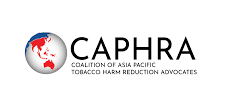
India, 2025: The Coalition of Asia Pacific Tobacco Harm Reduction Advocates (CAPHRA) has issued a strong warning that the World Health Organization’s (WHO) recent policy shift against tobacco harm reduction not only contradicts decades of evidence but disproportionately harms countries like India—where the consequences are far more complex and far-reaching than in high-income settings.
India, with the largest number of tobacco users globally, faces a uniquely diverse and informal tobacco landscape. Unlike the cigarette-dominated markets of the West, India’s tobacco economy includes over 200 million smokeless tobacco users, millions of bidi smokers, and an informal value chain that supports more than 45 million livelihoods—from farmers and bidi rollers to small retailers and micro-enterprises, many led by rural women.
A transition to the manufacture of safer nicotine products with readily available raw materials and resources would protect those livelihoods and address the public health harm from combustion and dangerous oral products.
“This isn’t just a public health misjudgment—it’s an act of economic and public health harm an economic blow to the most vulnerable,” said Nancy Loucas, Executive Coordinator of CAPHRA. “WHO’s donor-influenced policy shifts that prioritize cessation-only approaches may work in Manhattan or Oslo, but in Munger or Malda, they can exacerbate health inequities and erode India’s right to decide its own policy path.”
Historically, the WHO supported a three-pillar approach: prevention, cessation, and harm reduction. Its own tobacco regulation group, TobReg, once acknowledged that alternatives such as e-cigarettes and heated tobacco products, when properly regulated, could save lives—especially for people unable or unwilling to quit.
But in recent years, under the growing influence of philanthropic donors like Bloomberg Philanthropies and the Gates Foundation, WHO has shifted toward a prohibitionist agenda—rejecting innovation and undermining the very tools that once showed promise for global tobacco control.
CAPHRA argues that this shift reflects a dangerous global double standard. While countries like Japan and Sweden have seen smoking rates plummet due to legalized safer alternatives, WHO now urges low- and middle-income countries to ban the very tools that others are using to succeed.
If WHO’s position is truly grounded in science and health equity, then why has it failed to impose these bans in high-income countries like the United States, United Kingdom, or Japan? The reality is that in those countries, prohibition is politically infeasible, economically disruptive, and socially unpopular.
So why are such impractical mandates being promoted in countries like India—where enforcement is harder, alternatives are fewer, and the socio-economic fallout is far more severe?
India is also one of the countries least equipped to absorb the unintended consequences of such bans. The lack of universal cessation support and limited public health infrastructure make WHO’s recommendations not only impractical, but actively harmful.
Prohibition in this context risks triggering a surge in illicit trade, loss of tax revenue, and the abandonment of users to more dangerous, unregulated substances.
India stands at the cusp of innovation, which is being curtailed by restrictive policies from the WHO. Under flagship policies like Atmanirbhar Bharat, the country has the potential to accelerate the transition from harmful tobacco production and manufacture to offering refined, science-based alternatives for the world market—contributing to economic growth and positioning India as a global leader in innovative reduced-risk technologies.
WHO’s current posture undermines this potential and discourages the very innovation the world needs.
“This is about more than tobacco—it’s about sovereignty, science, and saving lives,” Loucas emphasized. “India must push back. We urge Indian policymakers to reject donor-driven agendas that ignore evidence on harm reduction. Instead, India should champion science-based, consumer-focused policies that support access to safer nicotine products, drive innovation, and protect public health without compromising livelihoods.”































